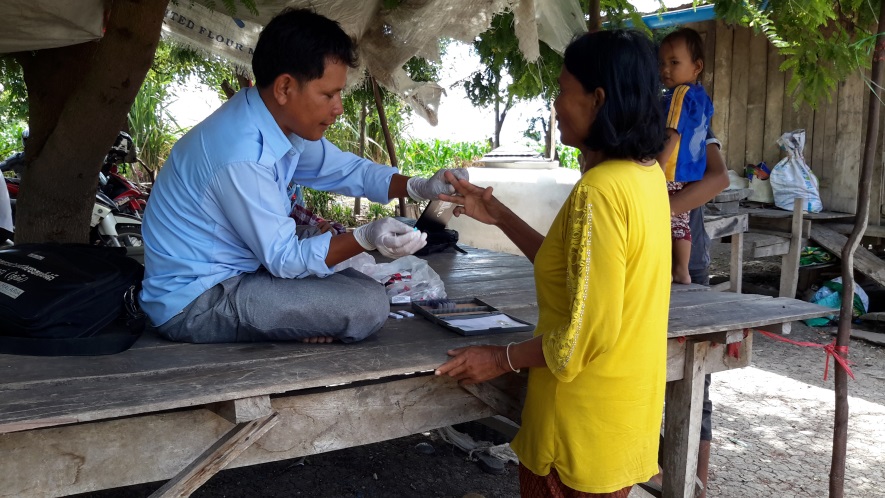Sampov Loun Operational District is located along the Cambodian-Thai border where malaria drug resistance has been documented. While the district has historically experienced a heavy malaria burden, confirmed malaria cases have declined to 450 cases in 2014. The district has, therefore, shifted from malaria control to malaria elimination.
In close consultation with PMI and the National Centre for Parasitology, Entomology, and Malaria, a basic essential package of activities for malaria pre-elimination using the “1-3-7” surveillance approach was designed for piloting in this district. This approach requires that all confirmed malaria cases are reported to district health authorities within 1 day, that cases are investigated within 3 days, and that follow-up actions are taken within 7 days. Prior to the launch of the program in June 2015, all implementers including district and health center staff and village malaria workers were oriented and trained on the approach with PMI’s support.
This new approach has resulted in a significantly more intensive workload on health workers, given the need to notify, investigate, and respond to all cases within a specified time frame and provide follow-up visits to patients with P. falciparum and mixed infections 28 days after treatment.
While PMI’s implementing partner staff initially spearheaded activities, leadership for activities transitioned to district and health center staff within 6 months, and ownership for elimination activities now rests entirely with the district team. When district staff are notified of a case by a village malaria worker, the district and health center staff immediately communicate to schedule a case investigation and follow-up interventions.
Mr. Om Bunthy, the district’s Malaria Supervisor, is a motivated contributor to the elimination approach and has supported and guided implementation of activities since the beginning. He stated that “the essential package of activities for malaria elimination has changed the way we work. When we became involved in pre-elimination activities, we began to pay close attention and follow through on a lot of initiatives. Furthermore, we have learned new things, including how to perform indoor residual spraying and analyze case classification [indigenous/locally transmitted or imported cases].”

